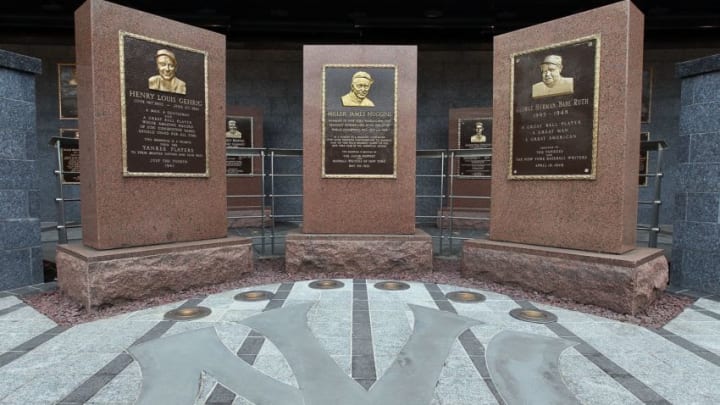New York Yankees: 50 greatest players of all-time
By Phil Watson

43. . SP. 1903-09. Jack Chesbro. 45. player
Jack Chesbro made some noise in the fall of 1902 when he jumped from the establishment Pittsburgh Pirates of the National League to the brand-new Highlanders of the upstart American League.
Chesbro had led the NL with 28 wins and eight shutouts in 1902 and was solid in his first season with the Highlanders, going 21-15 in 40 appearances, 36 starts, and 324.2 innings, striking out 147 with an ERA of 2.89 and a WHIP of 1.152.
But nothing Chesbro had done up to that point could have prepared anyone for one of the most incredible seasons in baseball’s modern era (post-1901).
Chesbro was basically the No. 1 and No. 2 starters (and occasionally the No. 3) for the Highlanders, who battled the Boston Americans — who won the inaugural World Series the previous October — down to the final day of the season.
The Highlanders went to Boston for a pair of doubleheaders needing a split of the four games to take home the crown, with the games originally scheduled for Hilltop Park in New York.
But Highlanders owner Frank Farrell had rented out the facility to the Columbia University football team for their Oct. 8 game and those final four games were instead moved to Boston’s Huntingdon Avenue Grounds.
Boston swept the Saturday twin-bill and put New York in the position of needing to sweep another doubleheader on Oct. 10 to win the pennant. Chesbro, who had beaten Boston 3-2 in New York on Oct. 7, took the ball on two days’ rest for the first game.
Chesbro had a 2-0 lead in the seventh when it all came apart. His defense faltered behind him and Boston was able to tie the game. It came apart for the right-hander in the eighth.
With the go-ahead run on third base and two outs, Chesbro threw his spit ball — his best pitch — to Freddy Parent with two strikes. The ball sailed past catcher Red Kleinow and his the backstop on the fly. Lou Criger jogged home from third and that was that. Boston won the pennant.
With apologies to the #KillTheWin crowd, Chesbro was magnificent in 1904, despite the way it ended. He started 51 games, relieved in four others, completed 48 games and amassed 454.2 innings en route to a 41-12 record, a 1.82 ERA and a 0.937 WHIP.
The 41 wins will stand as a modern-era record (barring turning the game over to androids in the future). Ed Walsh of the Chicago White Sox in 1908 is the only other 40-game winner since the turn of the 20th century.
Chesbro, who turned 30 during the 1904 campaign, remained solid, but was never quite as sharp again. He led the AL with 42 starts and 49 appearances in 1906 en route to a 23-17 record. The Highlanders waived Chesbro in September 1909 and he finished his big-league career with Boston, which had been renamed the Red Sox in the interim.
In seven seasons with New York, Chesbro was 128-93 with a 2.58 ERA and 1.120 WHIP in 1,952 innings. In 1907 he pitched 206 innings without surrendering a home run, an impressive accomplishment even for the dead ball era.
Chesbro died Nov. 6, 1931, in Conway, Massachusetts at the age of 57. He would be posthumously inducted into the Hall of Fame when he was selected by the Old Timers Committee in 1946.